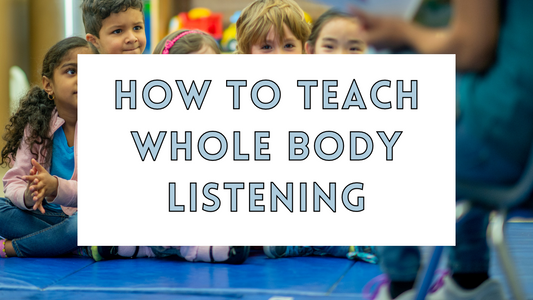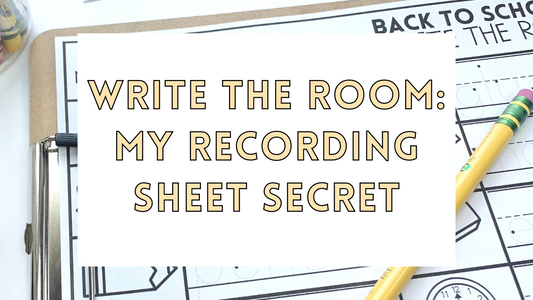
Math is a fragile subject, students can end up loving it one minute and then absolutely despising it the next. With this, comes great responsibility for us as teachers. Math can be challenging yes, but the stigmas around it can be an even bigger hurdle to overcome. There is a misconception, yes I will say a misconception, that math is difficult, and nearly impossible, for most adults. However, we as teacher want to believe that math it is most certainly possible to be and feel successful in the area of mathematics. To do this, we need to reframe the way we see mathematics and the way we frame it for our students.
In my classroom, I provide a student selected differentiation system during math workshop. In Kindergarten, we use Counting Collections as a springboard. Students should be provided opportunities to self-assess and make choices about their rigor. However, the choices available are not “easy”, “medium” and “hard”. As much as there is a stigma around math being overly difficult, there is a conflict in classrooms where students choose hard or challenging tasks, whip through them and then shout “that was easy”. In order to create a math workshop, with self-regulated choice, that is safe and secure for all blossoming mathematicians, we need to create the choice in an intentional way. To create this environment, the language and rhetoric around self-directed choice also matters deeply.
This seems like a lofty task. You may be wondering, “How can I balance security, esteem, language and appropriate rigor? Wouldn’t it be best if I just told each child what they should be working on?” Yes, this seems overwhelming and quite frankly, a bit time consuming. However, students need to be given opportunities to self-assess and practice making choices around their academic rigor, and not just when they walk through the doors of fifth and sixth grade. Students need to practice making these choices in their first few years of school, arguably kindergarten and even preschool.
Let me provide you with a way to do this.
Start Simple | Choose your content
I would first start with one math activity that you wish to have student-selected differentiation in. In my classroom, I chose counting collections. We specifically use the counting collections set from Research & Play. She so beautifully created opportunities for counting collections to be differentiated. Counting in kindergarten can range from working on one-to-one correspondence, all the way to subtracting a group from the whole. The work one does with counting also has a steady progression of growth.
Find the 4 progressions of differentiation
In Seed, Sprout, Bloom and Grow, there are 4 levels of difficulty and mastery. However, you can always reduce that to three if need be. In order for students to make appropriate choices for themselves as mathematicians, your job is to establish a natural progression of tiers and challenge. Seed should not be “counting” and then Sprout be “identifying shapes”. This is meant to be used as a way to gradually grow and establish mastery in a mathematical study. For Counting Collections I chose the following as each tier:
Categorize by Difficulty, Scope & Sequence
Seed | Counting with one-to-one, using the template with circles to outline one-to-one
Sprout | Counting in a blank square, for students who are ready to use one-to-one without the template and/or count higher quantities
Bloom | Counting that includes the element of adding two groups together. This can be made more or less challenging depending on the size of the groups and the element of writing equations.
Grow | As this is the final level, it should be the most challenging of the skill that is being practiced. All is relative. After you choose the area of study, search for the progression of difficulty. In our classroom, as it was near the end of the year, this tray included tools for subtraction and removing a group from the whole.
Then, start by introducing this to your students by having a conversation about the progression of plant growth. Yes, this is a very important part of the process. We are not labeling the progression of challenge after the growth of plants for fun and frills, but rather to symbolize and embody the growth our knowledge and understanding endures as well.
In order for this method of self-selected differentiation to do all it is meant to, a conversation about plants and their growth is necessary. Students must understand that plants are not always “plants”, but rather they start as a seed, then progress to a small sprout, become a blossom and then continue to grow. It can also be made explicit that this happens with nourishment like water, sun, soil and attention. Documenting the cycle of a plant with a real plant growing in your classroom would be a great way to start. However, if you do not have the time to do this, simply show pictures and lead a guided discovery of the cycle. By all means, simplify the process. Your main goal is to get across to students that plants start as simple seeds and they grow. Connect it all together with the link that like plants, our brains and knowledge will grow too.
Set It Up:

Try It Out:
When starting a new concept, like counting collections, start all of your students on “seed”. Then slowly, we did every two days, introduce the next tier. Students will naturally, especially in kindergarten, lean towards the one they truly understand and feel most comfortable with. Some of you may be thinking, “What if students choose bloom or grow when they are not ready yet?” Well, this is a great self-assessment and conversation. Some eager students will choose grow thinking that they are ready and then attempt to do the activity and not be successful… yet. This can lead to a great conversation with them specifically or even a whole group conversation as mathematicians at the end of a workshop time.
I also had a student who continuously chose “seed” though he was certainly past one-to-one correspondence and was ready to challenge himself and try “sprout”. Some students will need encouraging and prompting to move along When he tried “sprout”, it was right where he needed to be practicing. Some students will need prompting either up or down.






